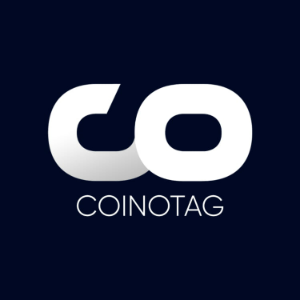Stablecoin Revolution: Kbank Launches Elite Task Force for Groundbreaking Financial Services
7 min read
BitcoinWorld Stablecoin Revolution: Kbank Launches Elite Task Force for Groundbreaking Financial Services The financial world is buzzing with innovation, and South Korea’s Kbank is making headlines with a bold move into the digital asset space. As a prominent neobank and a key banking partner for the crypto exchange Upbit, Kbank is now setting its sights on the future of finance by establishing a dedicated digital asset task force. This strategic initiative aims to delve deep into the potential of stablecoin -focused financial services, signaling a significant shift in traditional banking’s approach to digital currencies. What is Kbank’s Vision for Stablecoin Financial Services? Kbank’s newly formed six-member task force, composed of seasoned experts from the stablecoin association, isn’t just a symbolic gesture. It represents a serious commitment to understanding and leveraging digital assets. According to Money Today, their core mission is multifaceted: Trend Monitoring: Closely observe global trends in digital asset technology and regulatory frameworks. This includes staying abreast of advancements in blockchain, tokenization, and distributed ledger technologies that underpin stablecoins. Business Model Design: Develop innovative business models tailored for stablecoin-based offerings. This could involve exploring new revenue streams and operational efficiencies that stablecoins can provide. Strategic Development: Formulate comprehensive strategies for integrating stablecoins into Kbank’s existing financial services ecosystem, ensuring seamless and secure transitions for customers. This proactive stance positions Kbank at the forefront of digital banking evolution, potentially setting a precedent for other financial institutions in South Korea and beyond. Their focus on stablecoin solutions highlights a belief in their stability and utility for everyday financial transactions. Why Are Stablecoins Becoming a Cornerstone for Modern Financial Services? To truly appreciate Kbank’s initiative, it’s essential to understand the unique appeal of stablecoin s. Unlike volatile cryptocurrencies like Bitcoin or Ethereum, stablecoins are designed to maintain a stable value, typically pegged to a fiat currency like the US dollar, or backed by commodities or algorithms. This stability makes them incredibly attractive for a variety of financial applications where price fluctuations are undesirable. Here’s why stablecoins are gaining traction in financial services: Feature Benefit for Financial Services Price Stability Ideal for payments, remittances, and savings, removing volatility risk. Fast Transactions Enables near-instantaneous transfers across borders, reducing settlement times. Low Fees Often significantly lower transaction costs compared to traditional banking rails. Global Accessibility Accessible to anyone with an internet connection, fostering financial inclusion. Programmability Can be integrated into smart contracts for automated financial operations. For Kbank, leveraging these characteristics could mean enhancing their service offerings, reducing operational costs, and attracting a new generation of digitally-savvy customers who prioritize speed, efficiency, and lower fees. The integration of stablecoin technology holds immense promise for reshaping how financial transactions are conducted globally. What Benefits Could Kbank’s Stablecoin Integration Bring to Customers and the Bank Itself? The potential benefits stemming from Kbank’s stablecoin initiative are substantial, touching various aspects of financial interaction: Enhanced Remittances: International money transfers could become faster and cheaper. Imagine sending money to family abroad in minutes, not days, with significantly reduced fees. Efficient Payments: Everyday transactions, both online and in-store, could be processed more efficiently. Businesses might see quicker settlements, improving cash flow. Innovative Lending and Borrowing: Stablecoins could facilitate new forms of decentralized finance (DeFi) services, potentially offering more flexible and accessible lending and borrowing options to customers. Cross-Border Trade: Businesses engaging in international trade could benefit from streamlined payments, reducing currency conversion risks and delays. New Investment Products: Kbank might introduce new investment vehicles or savings products denominated in stablecoins, offering diversification for customers interested in digital assets without high volatility. For Kbank, these innovations could lead to increased customer engagement, a competitive edge in the rapidly evolving financial landscape, and new revenue streams. By proactively exploring stablecoin s, Kbank is not just reacting to market trends but actively shaping them. What Challenges and Regulatory Hurdles Must Stablecoin Adoption Overcome? While the promise of stablecoins is vast, their widespread adoption by traditional financial institutions like Kbank isn’t without its challenges. The task force will undoubtedly face several significant hurdles: Regulatory Clarity: The regulatory landscape for digital assets, especially stablecoins, is still evolving globally. South Korea, like many other nations, is grappling with how to classify and supervise these assets. Kbank’s task force will need to navigate complex legal frameworks to ensure compliance and consumer protection. Technological Integration: Integrating new blockchain-based technologies with existing legacy banking systems can be complex and costly. Ensuring scalability, security, and interoperability will be critical. Consumer Trust and Education: Despite growing awareness, many consumers remain wary of cryptocurrencies. Kbank will need to build trust and educate its customer base on the safety and benefits of stablecoin-based services. Competition: The digital asset space is highly competitive, with numerous fintechs and other banks also exploring similar solutions. Kbank will need to differentiate its offerings. Market Acceptance: Widespread adoption requires network effects. Kbank’s success will depend on how readily merchants and other financial entities accept stablecoin s for transactions. The task force’s role in monitoring trends and designing business models will be crucial in overcoming these obstacles, particularly in influencing or adapting to South Korea’s developing digital asset regulations. How Are Other Global Financial Institutions Approaching Stablecoin Financial Services? Kbank’s move is part of a broader global trend where financial institutions are increasingly exploring digital assets. Central banks worldwide are researching and developing Central Bank Digital Currencies (CBDCs), which are essentially government-backed stablecoins. Projects like the digital yuan in China or the ongoing discussions around a digital dollar or euro highlight this shift. Beyond CBDCs, private sector initiatives are also burgeoning: JPMorgan Chase’s JPM Coin: This private stablecoin is used for wholesale payments, enabling real-time money movement for institutional clients. Circle’s USDC: A leading USD-pegged stablecoin, USDC has seen significant adoption in DeFi and cross-border payments, demonstrating the market’s demand for stable digital currencies. Visa and Mastercard: Both payment giants are exploring how stablecoins and other digital assets can be integrated into their payment networks, potentially expanding their reach and efficiency. These examples underscore that Kbank is not operating in a vacuum but is joining a global race to innovate in digital finance. Their focus on stablecoins, specifically, aligns with the industry’s recognition of their potential as a bridge between traditional finance and the burgeoning crypto economy. The Future of Banking: A Stablecoin-Powered Horizon Kbank’s formation of a digital asset task force to explore stablecoin financial services marks a pivotal moment for the South Korean banking sector and the broader digital asset landscape. It signifies a clear recognition from a major traditional financial institution that stablecoins are not merely a niche crypto product but a foundational element for the future of payments, remittances, and potentially even lending. By dedicating a specialized team to monitor trends, design innovative business models, and strategize offerings, Kbank is positioning itself to be a leader in the digital transformation of finance. While challenges in regulation and adoption remain, the potential benefits for efficiency, cost-reduction, and enhanced customer experience are too significant to ignore. Kbank’s proactive approach could very well pave the way for a new era of banking, one where stable, digital currencies play a central role in everyday financial interactions, making transactions faster, cheaper, and more accessible for everyone. Frequently Asked Questions (FAQs) Q1: What is Kbank’s digital asset task force? A1: Kbank’s digital asset task force is a six-member team of experts launched to develop stablecoin-focused financial services. Their responsibilities include monitoring digital asset trends, designing business models, and strategizing new offerings. Q2: What is a stablecoin and why is it important for financial services? A2: A stablecoin is a type of cryptocurrency designed to maintain a stable value, typically pegged to a fiat currency like the US dollar. They are important for financial services because their price stability makes them ideal for payments, remittances, and other transactions where volatility is undesirable, offering speed, low fees, and global accessibility. Q3: What kinds of financial services could Kbank offer using stablecoins? A3: Kbank could potentially offer enhanced international remittances, more efficient payment processing, innovative lending and borrowing options, streamlined cross-border trade solutions, and new investment products denominated in stablecoins. Q4: What are the main challenges for stablecoin adoption in traditional banking? A4: Key challenges include navigating evolving regulatory frameworks, complex technological integration with existing systems, building consumer trust and educating users, intense market competition, and achieving widespread market acceptance among merchants and other financial entities. Q5: How does Kbank’s initiative compare to global trends in digital assets? A5: Kbank’s move aligns with a global trend where central banks are exploring CBDCs and private institutions like JPMorgan Chase and payment networks like Visa are integrating stablecoins into their operations, indicating a broad shift towards digital currencies in finance. Q6: Why is Kbank’s focus on stablecoins significant for South Korea? A6: As a leading neobank and partner to a major crypto exchange, Kbank’s deep dive into stablecoins is significant because it could set a precedent for digital asset integration within South Korea’s traditional financial sector, fostering innovation and potentially influencing future regulatory developments. If you found this article insightful, consider sharing it with your network! Your support helps us bring more valuable insights into the evolving world of digital finance and stablecoins. To learn more about the latest crypto market trends, explore our article on key developments shaping stablecoin institutional adoption . This post Stablecoin Revolution: Kbank Launches Elite Task Force for Groundbreaking Financial Services first appeared on BitcoinWorld and is written by Editorial Team

Source: Bitcoin World



